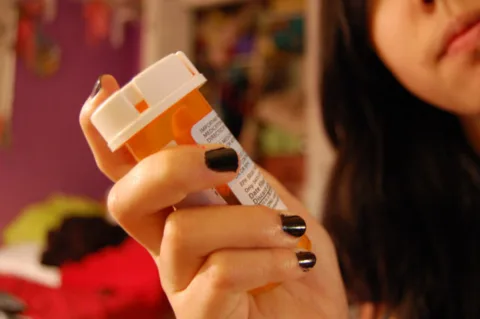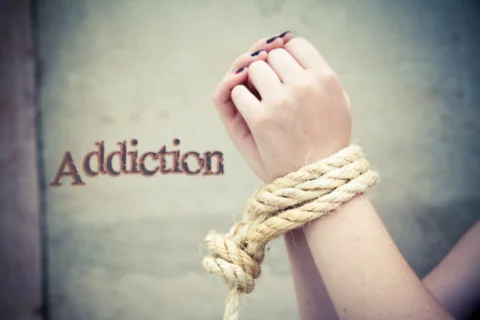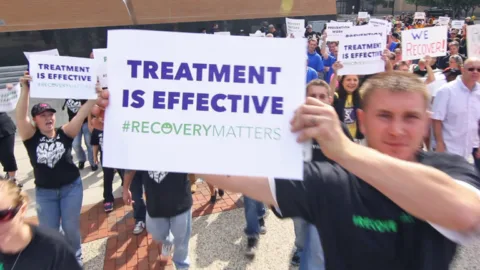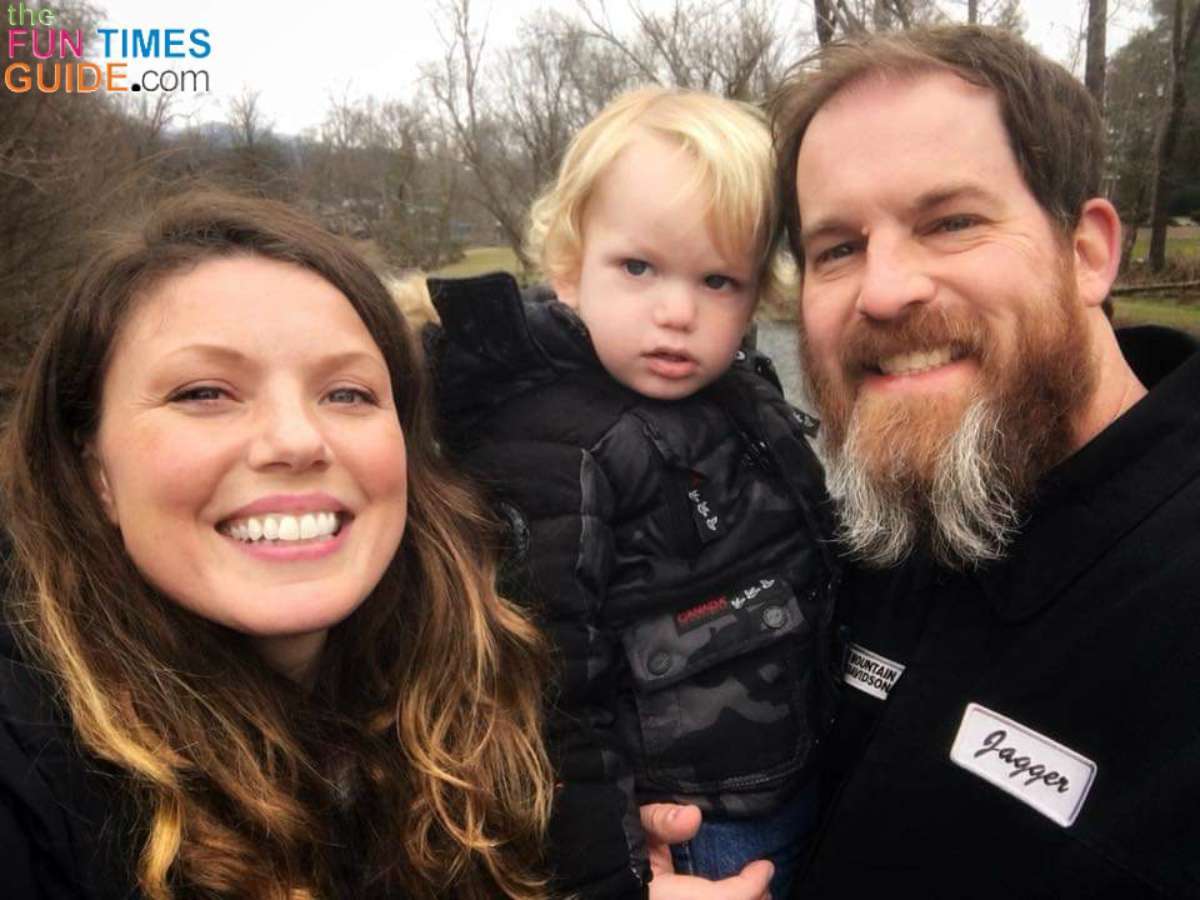What do Prince, Chris Farley, and Phillip Seymour Hoffman all have in common?
Besides being super-talented and gone before their time… they all died from accidental drug overdoses. All 3 of these celebrities had been dealing with an addiction to opiates (what pain medicine is made of).
With nearly 300 million prescriptions written annually in the United States alone, it’s no wonder that prescription drug addiction is a growing concern.
You don’t have to be a celebrity to fall victim to opiate addiction. I suffered from a back injury in 1995 and my life was changed forever.
I was prescribed prescription painkillers and muscle relaxers while I awaited surgery… which I finally had a year later. I was dependent on the pain killers to function but that dependency eventually turned into a full-fledged addiction.
I didn’t set out to become addicted to the prescription pain killers, but it happened anyway. Could this have been prevented?
Here are 5 ways to identify a potential problem with prescription drugs — especially painkillers — and what can be done to achieve a successful recovery.
#1 – Determine Your Risk
It’s often difficult to determine if someone is susceptible to a prescription painkiller addiction without knowing something about their medical history — often beyond what’s on file with the doctor.
It’s important to consider these factors (especially if previous addictions are present) when determining your degree of susceptibility to addiction:
- Do you have a family history of addiction?
- Are you a male?
- Do you have any other mental health disorders?
- Do you have family support?
- Do you suffer from anxiety, depression, or loneliness?
- Are you taking a highly addictive drug?
If you answered “yes” to most or all of these questions, you certainly are more at risk to develop an addiction.
To be fair… people with no previous history of addiction can also develop a serious dependency on prescription drugs. However, there are steps that can be taken to identify and overcome such an addiction, regardless of individual circumstances.
#2 – Decide When To Stop
If you’re like me, you aren’t trying to become addicted to prescription painkillers. In order to avoid painkiller dependency, you need to monitor your use of the medication(s).
Early signs of a possible prescription drug addiction may include:
- Finding reasons to take more than the recommended dosage; for example, “The pain is more intense this time, so I’ll take 1 extra pill.” (I’ve done this.)
- Thinking pain will return if the pills are no longer taken. (I’ve thought this.)
- Experiencing noticeable signs of anxiousness when dosages start to wear off… withdrawal. (I’ve felt this.)
- Purposely not admitting that pain is going away as an excuse to keep taking pills. (yep, guilty of this too.)
The tricky part of managing prescription drugs — especially painkillers — is determining the point at which it’s best to stop taking such medications to reduce the risk of addiction.
Since pain is subjective, it’s often a judgment call for doctors. Some doctors prescribe less-potent medications as a stepping stone to weaning their patients off painkillers altogether.
#3 – Admit When There’s A Problem
Prescription drug abusers aren’t going to experience a meaningful recovery if they’re not willing to acknowledge that a problem exists.
At this point, I wasn’t ready to admit I had a problem. I was embarrassed and wasn’t the type to ask for help. I’m not unique, though.
Usually at this point, family members and friends are concerned and begin to point out that an addiction may be developing. They may even stage an intervention.
Undetected addictions to prescription drugs may escalate to behaviors like “pharmacy shopping” and turning to black-market sources for the same or similar drugs.
Intervention at this point often involves:
- Providing clear examples of dependency — such as witnessing instances of taking more pills than necessary.
- Expressing honest concerns while remaining calm to avoid defensiveness.
- Asking direct questions like, “Can I honestly stop taking those pills right now?”
- Discussing possible recovery options — such as treatment, therapy, or outpatient group counseling.
The attitude of family and friends is one of the most important driving influences on the success of an intervention.
Remaining positive and hopeful can go a long way toward ensuring that the addicted person always has an open path to drug addiction treatment, if they so choose.
#4 – Seek Addiction Treatment
Treatment for an addiction to prescription drugs ultimately depends on the extent of the addiction, how long it has gone undetected, and the specific drug(s) involved.
I accepted the offer of help and went into an inpatient treatment center. It was the best option for me because I had to be medically monitored while withdrawing from the pain killers. Treatment not only addressed my physical withdrawal symptoms but also treated my emotional and spiritual wellness through intense counseling.
While everyone has different circumstances, addiction treatment typically involves:
- Supervised Withdrawal
- Individual Counseling and/or Group Therapy
- Follow-up Support
While careful monitoring and self-reporting of early signs of addiction can be effective ways to reduce the risk of developing a dependency, there’s still a gray area where it’s difficult to balance the risk of addiction with the benefits of prescription drugs.
If you’re like me, you might not have enough money to pay for a 28-day stay in a residential treatment facility. I was lucky enough to receive a scholarship which covered my entire stay.
Oftentimes, alumni and/or their families give back to the center through donations. Many times there are scholarships available — so it can’t hurt to ask!
#5 – Take Advantage Of Ongoing Support
There are few places in the world where you’ll find more honesty, courage, and support than in a 12 step meeting. It’s one of the most amazing experiences you can have.
12 step groups are not what you see on television or in the movies.
12 step groups are an important resource of recovery for 2 reasons:
- They’re effective — millions of people have recovered through them.
- They’re free and universally available.
I happen to have found serenity and recovery in 12 step programs and love knowing that whenever I attend a meeting I know that I have at least 1 thing in common with everyone in the meeting!
Because I am experiencing a successful long-term recovery and want to share my experience with others, I often speak at rehabilitation centers and local meetings in my area. (It was hard for me at first, but I’m getting better at it.)
Almost every country, every city, every cruise ship has a 12 step group.
12 step support groups aren’t the only option for those seeking long-term recovery. There are many other kinds of recovery support — including doctors, therapists, addiction counselors, and treatment programs.
Determine the right fit for you and commit to breaking free from the bondage of addiction. It worked for me!








